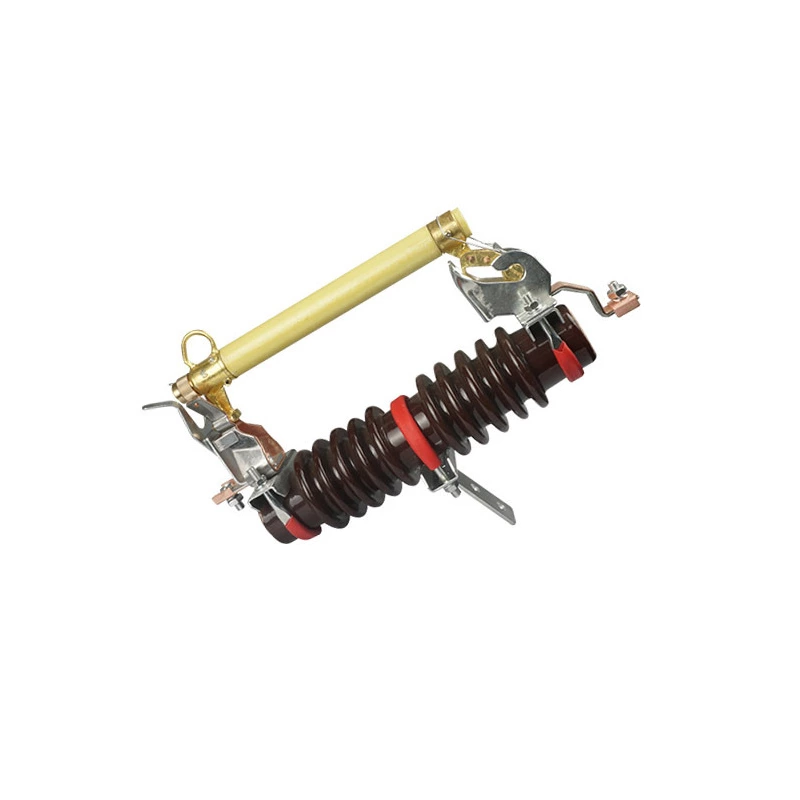Analysis of the drop-out action process of the drop-out fuse
2、 Analysis of the entire process of drop out fuse actions
Circuit breaker triggering stage (0-5ms)
When the fault current reaches the minimum melting current of the melt (1.3Ie), the melt enters a state of Joule heat accumulation. Silver copper alloy material undergoes nanoscale grain boundary melting at a current density of 800-1200A/mm ², forming multiple necking points in the center of the melt. The critical melting time meets:
t=K⋅(I/Im)−n
Among them, K is the material constant (silver copper alloy K=10-15), and n is taken as 1.5-2.0 to achieve inverse time protection characteristics.
Mechanical release stage (5-20ms)
At the moment of melt fracture, the compression spring (pre tension force 50-80N) releases potential energy, driving the moving contact to detach from the stationary contact at an acceleration of 3-5m/s ². At this stage, it is necessary to overcome the electric repulsion between the contacts (F=0.5L'i ², L 'is the dynamic inductance gradient) and ensure that the separation speed is greater than 0.8m/s to avoid contact reignition.
Arc development stage (20-100ms)
The metal vapor arc generated during contact separation is rapidly converted into a gas arc under the decomposition of the gas producing material (melamine). The quartz sand medium forms a multi-stage narrow slit arc extinguishing structure, which enables the arc voltage gradient to reach 200-400V/cm and achieves forced zero crossing of current. The energy density of the arc during this process is controlled at 5-8MJ/m ³ to avoid melting tube rupture.
Status indication stage (after 100ms)
Under the action of its own weight and mechanical interlocking device, the melting tube completes a 60 ° -75 ° inclined drop, forming a visible fracture. The drop angle has been optimized through dynamic simulation to ensure a stable indication state under a wind load of level 6 (12m/s).

